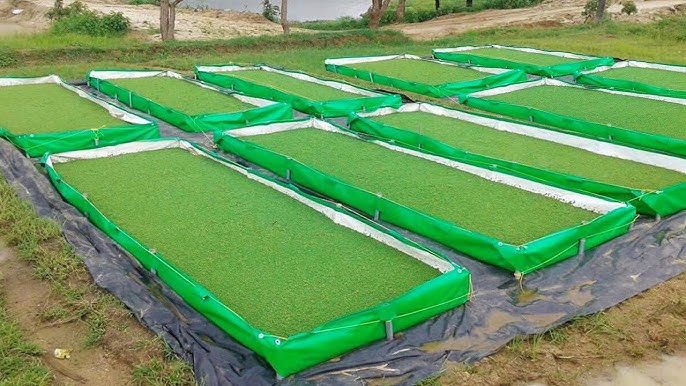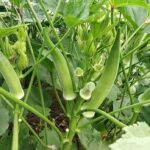Azolla farming in Kenya has emerged as a transformative practice for farmers seeking sustainable, affordable, and high-quality feed options for their livestock. Known as the “green gold,” Azolla is an aquatic fern with the remarkable ability to double its biomass within 3–10 days. This guide explores Azolla farming, covering everything from its ecological requirements to its benefits and practical uses in Kenya.
What is Azolla?
Azolla is a small, fast-growing aquatic fern characterized by floating stems and hanging roots. It thrives in ponds, wetlands, and other water bodies, requiring minimal resources to grow. This highly productive plant serves multiple purposes, such as:
- Livestock feed for cattle, poultry, pigs, and fish.
- Organic fertilizer to enrich soil fertility.
- A sustainable solution for reducing livestock feeding costs.
Why is Azolla Farming Important in Kenya?
With the rising cost of commercial animal feed and increasing pressure to adopt sustainable farming practices, Azolla provides a practical alternative. Its high protein content, rich nutritional profile, and ability to grow rapidly make it ideal for farmers across Kenya.
High-Ranking Keywords for Azolla Farming in Kenya
- Azolla farming in Kenya
- Azolla feed for livestock
- Sustainable farming practices in Kenya
- Organic livestock feed Kenya
- Benefits of Azolla farming
Nutritional Benefits of Azolla
Azolla is packed with essential nutrients that make it a valuable addition to livestock diets. Key benefits include:
- High Protein Content: With up to 30% crude protein, Azolla is an excellent protein source for animals.
- Rich in Amino Acids: Azolla contains essential amino acids crucial for animal growth and health.
- Vitamin-Rich: It provides vitamins A, B12, and beta carotene.
- Mineral Abundance: Azolla is rich in minerals such as potassium, phosphorus, calcium, and magnesium.
- Digestibility: Its soft structure ensures easy digestion for animals, enhancing feed efficiency.
Varieties of Azolla Grown in Kenya
Several species of Azolla exist, but the most common in Kenya is Azolla pinnata, valued for its adaptability and high yield. Other notable species include:
- Azolla nilotica
- Azolla imbricata
Ideal Ecological Conditions for Azolla Farming
To achieve optimal growth, Azolla requires specific environmental conditions:
- Water Sources: Ponds, ditches, or wetlands with stagnant or slow-moving water are ideal.
- Soil pH: Thrives in soils with a pH range of 3.5–10, with optimal growth at 4.3–7.
- Temperature: Grows best in temperatures between 20°C and 30°C.
- Sunlight: Requires partial shade with about 25–50% sunlight exposure.
- Composted Manure: Fully composted manure provides the nutrients Azolla needs for rapid growth.
Step-by-Step Guide to Growing Azolla
- Prepare the Pond:
- Choose a flat area with access to water.
- Construct a shallow pond or use plastic-lined pits.
- Ensure proper drainage to prevent waterlogging.
- Add Nutrients:
- Apply 1–2 inches of fully decomposed manure evenly across the pond.
- Fill the pond with water to a depth of 10–15 cm.
- Plant Azolla:
- Spread Azolla seeds or starter plants evenly over the water surface.
- Monitor for pests and diseases, ensuring the pond remains clean.
- Maintain Growth:
- Check water levels regularly, adding fresh water as needed.
- Harvest weeds and remove debris to maintain water quality.
- Harvest Regularly:
- Azolla is ready for harvest every 3–7 days.
- Use a net to collect the fern, allowing small portions to remain for regrowth.
Harvesting and Usage of Azolla
- Harvesting:
- Harvest Azolla in the early morning to retain freshness.
- Leave about 10–20% of the fern in the pond for continuous production.
- Drying and Storage:
- If not used immediately, dry Azolla in the sun to extend its shelf life.
- Store dried Azolla in airtight containers to prevent spoilage.
- Feeding Livestock:
- Direct Feeding: Offer fresh Azolla to livestock as a high-protein feed.
- Dried Feed: Mix dried Azolla with other feeds for balanced nutrition.
Economic Benefits of Azolla Farming
- Cost-Effective: Reduces dependency on expensive commercial feeds.
- High Yields: Produces up to 12 tonnes per hectare under ideal conditions.
- Low Input Requirements: Needs minimal fertilizers, water, and land.
- Sustainability: Provides an eco-friendly alternative to chemical fertilizers and synthetic feeds.
Challenges in Azolla Farming
- Water Scarcity: Azolla farming requires consistent water availability.
- Pest Management: Algae growth and pests like snails can affect yields.
- Knowledge Gap: Limited awareness among Kenyan farmers hinders widespread adoption.
Success Stories of Azolla Farming in Kenya
Many Kenyan farmers have successfully integrated Azolla farming into their practices, reaping benefits such as reduced feed costs and improved livestock health. Farmers in semi-arid areas like Machakos and Kajiado are turning to Azolla as a drought-resistant feed alternative.
Tips for Successful Azolla Farming
- Ensure adequate pond maintenance and water quality.
- Use high-quality starter seeds or plants for better yields.
- Incorporate Azolla into organic farming practices for added sustainability.





